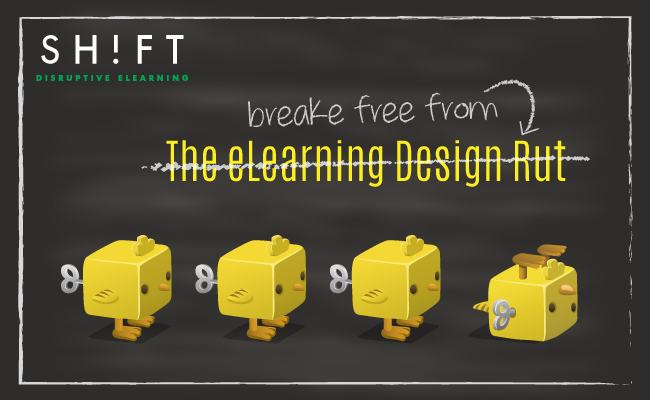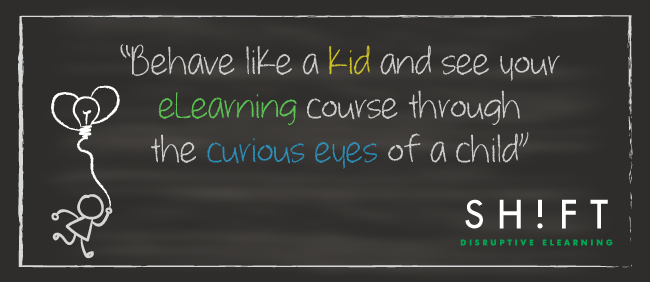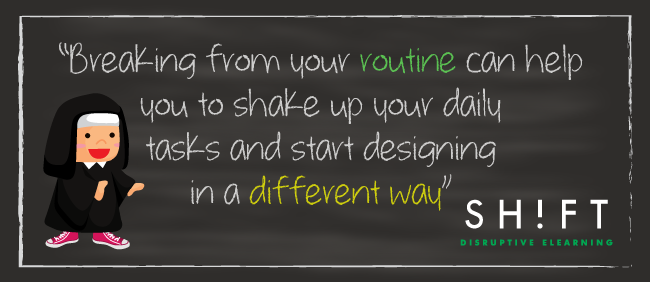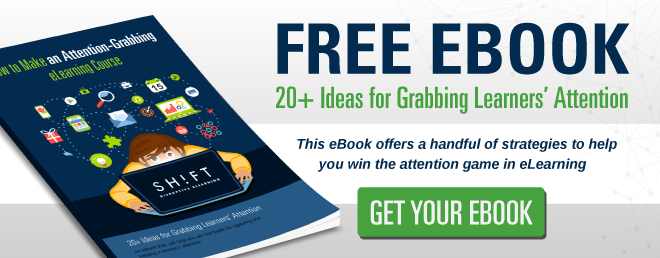How often have you spent hours staring at a blank screen in front of you trying to come up with an innovative eLearning design? Waiting for inspiration to strike is agonizing, and if ideas take too long to show up, you begin to wonder if your creative juices have dried up. Scary, isn't it?
Admit it; we don't get to enjoy too much variety in the content for the courses we create. HR policies, health and safety guidelines, sales techniques, team management and leadership roles, and application and systems training—we seem to circle round and round these types of content, often for years. Our learners often belong to the same demographic group, which means they tend to have similar learning styles and preferences. It is not surprising that most of the time we fall back on tried-and-tested design strategies, either because we fear experimenting or we run short of ideas. We end up falling into a design rut. Beware!
Do not let your creative juices dry up. Follow the tips below to cultivate and nurture a creative mind that is always brimming with ideas.

Hack #1: Be Curious. Ask Questions.

How do kids learn? They ask questions. They want to know why. They want to know how. They want to know what if. They are curious creatures who learn about the world around them by asking questions. It is how you can learn as well because questioning is critical to innovating. That's how Steve Jobs used to stumble upon his brilliant ideas!
When designing an eLearning course, you might come across a stumbling block or an obstacle that you can't make your way around. During these times, do not look for quick fixes. Do not settle for an alternate way to do things, so you can bypass the obstacle. Refuse to be content with what others have devised for their courses. Instead, look for solutions to your specific problem.
Examine the problem from different angles. Ask questions to find out what exactly is not working in your current design. Visualize in your mind how the ideal design will look like; then ask what is missing from the current setup. Step into the shoes of the learners, and ask yourself how you want the course to be presented to you. In short, behave like a kid and see your course through the curious eyes of a child. The answers to your questions will give you the insights you lack now.
Creative people are curious, and they ask a lot of questions. They are curious about the people around them, what makes them tick, and why they act and speak the way they do. Curious people want to know how systems work and why these fail. They are generally curious about life. If you want to be an out-of-the-box thinker, then you too have to develop this probing, questioning mindset.
The best advice: “Be open to more questions, more learning, more experimentation, more opportunities (as well as challenges) and more change. Settle for less than 100% certainty and be prepared to experiment, learn and adapt without it. In facing growth opportunities or challenges you must be prepared to admit you are wrong and to be more open-minded and indeed curious”-- The Strategy Pitstop™ process.
Read these articles:
- Seven Ways to Be More Curious
- Ten Exercises to Develop Your Child’s Curiosity Muscle
- How to Become More Curious and Unleash New Potential
- 5 Ways to Always Be Learning and Insatiably Curious
- Curiosity: The One Superpower We Don't Use Enough, And How To Use It
- 7 Reasons To Be Curious
- Be More Curious than Afraid
Hack #2: Break Habits. Creativity is the Opposite of Routine.

Habits are good as long as they simplify and automate your life, so you can get on with the more meaningful and critical tasks. Routines help you become more productive; you can be more efficient if you have some sort of a checklist to follow. But did you know habits can push you into a creativity rut? Doing too many routine tasks for too long makes the mind accustomed (read: attached) to treading the well-worn path. It no longer feels motivated to explore, nurture, or sustain novel ways of thinking and doing things.
If it is an eLearning course to teach upselling techniques to salesmen, then the ID strategy has to be centered around a branching scenario. If the course is an application training program, you must go the simulation way. See? After designing courses for years, your mind cannot see beyond the obvious. The creativity rut you have fallen into prevents you from exploring other solutions. Breaking from your routine can help you to shake up your daily tasks and start designing in a different way. As the famous quote says: “Sometimes breaking your routine is exactly what you need”.
As an instructional designer, you must break your habit of settling for tried-and-tested but stale and boring solutions. You need to break old routines to get new ideas. Brainstorm with your team members. Visit a museum or read a book. If possible, rope in the client as well to discuss novel ideas. Do not be afraid to break out of the mold.
Experiment. Here's what to do when you cannot hit upon a great design idea right away:
- Take a design u-turn and think along lines you have never ventured on before. Experiment with colors, shapes, fonts, and backgrounds. Play with them till you stumble upon a knockout design. This will take more time than what you would have spent implementing a stale old design, but the results will be worth the effort. Now can you convince your manager to give you time?
- Create your own projects and unleash your creativity on the pages. Experiment to your heart's content and in your own time. This is the best way to get out of the creativity rut.
Meanwhile, at a deeper psychological level, cultivate a mindset that is unafraid to try new things. Break habits once in a while by taking a different route to office or trying to type with the other hand. Ask your boss if you can be shifted to a new project. These are seemingly trivial tasks, but they jolt your mind to wake up from the routine-induced stupor it had been in for so long. When you break routines occasionally, your mind becomes confident of entertaining new ideas and treading unexplored territories.
Try the following exercises to get comfortable with the idea of "new:"
- Shower in the dark.
- Wear ear plugs and eye masks to shut out the noise and the scenes around you. Researchers say sensory deprivation can work wonders to boost your brain's creativity muscles.
- Listen to music or watch movies that are entirely different from what you usually prefer.
- Change Your coffee routine.
Also, we recommend reading these articles:
- 8 Bad Habits that Crush Your Creativity and Stifle Your Success
- Five Key Practices To Keep Your Creative Job Engaging and Avoid Burnout
- 6 Ideas from Creative Thinkers to Shake Up Your Work Routine
- How to Break your Routine and Why it Matters
- Creative Problem Solving Techniques
CONCLUSION:
When you see from a different perspective, you can find inspiration in the mundane things of life and combine elements in quirky ways to come up with innovative design ideas.
You can cultivate creativity in many ways. Watch this space for more hacks.








